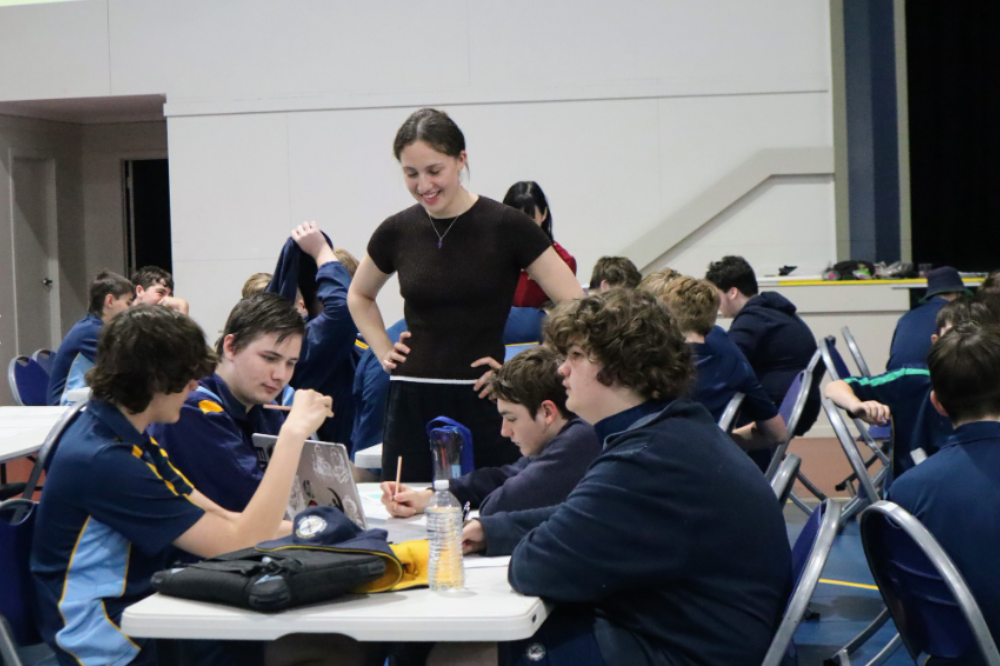
Reports have projected need for 1.2 million tech jobs by 2030 and 2 million workers in engineering and building trades by 2050. Yet, students’ participation in STEM subjects has been declining, threatening to prolong Australia’s STEM workforce shortage.
To address this, the Federal Government has introduced support for schools through a National STEM School Education Strategy from 2016-2026. But while this initiative was widely welcomed, it’s showing few results.
Fortunately, other efforts are underway to engage and upskill young Australians in this fast-paced and exciting industry.
Recently, more than 1,300 students from Western Australia, Queensland, the ACT, and Victoria got the chance to unleash their tech skills, crafting AI solutions to tackle cybersecurity, healthy habits, and digital well-being challenges.
Australia’s Crazy Good Tech Challenge with IBM, a collaboration between IBM and Crazy Ideas College (CIC), saw Year 7-10 students participate in a series of workshops and design sprints to generate ideas across four themes: Learning in the Age of Advanced Technology & AI; Cyber-Safe, Cyber-Smart Citizens; Healthy Habits for Techies; and Be Your Best Tech Self.
The winning ideas, judged by a panel consisting of Kate Tollenaar (IBM), Rosie Thomas (Project Rocket), Janet Searle (CSIRO) and Kate Kerwin (She Codes), were:
- PosiBot (Ashdale Secondary College, WA): An AI companion that monitors online posts, offering advice to encourage kind communication. Users earn points for positive posts and receive strikes for negative ones, fostering a safer online space.
- International Touch Grass Day (Ryan Catholic College, QLD): An event encouraging participants to lock away their phones for a day while engaging in outdoor games and activities. The initiative promotes less screen time and more face-to-face interaction.
- Botman (Ashdale Secondary College, WA): An AI figure modelled after Batman that helps users identify misinformation. Botman provides free presentations on cybersecurity and 24/7 support through a paid service, making cybersecurity more engaging and accessible.
- The JOB-BOT (Ashdale Secondary College, WA): An AI-powered helmet that analyses an individual’s traits to suggest the best career paths, helping them discover fulfilling jobs based on their personalities, with the potential to reduce unemployment and underemployment.

‘AI is a powerful collaborator’
With AI and other new and emerging technologies changing the skills that Australian students need for future jobs, principals are looking to ensure their schools keep up.
“The next generation are ‘born digital’. Whether they are using AI to enhance creativity and inspire new ideas, help with idea generation by analysing data and trends, or highlight connections between concepts, these new and emerging tools will act as a collaborator,” Kate Tollenaar, IBM’s Director of Government and Enterprise A/NZ, told The Educator.
“For example, in fields like engineering and design, AI can help simulate environments or predict outcomes, allowing for rapid prototyping and testing of ideas without the cost and time typically involved.”
Tollenaar pointed out that AI can also be used to tailor educational experiences to individual learning styles, helping students explore subjects in ways that resonate with them and prepare them more so for the future.
“Principals can seek advice from teachers and students and school communities about how AI can best inform their education experiences,” she said. “They can encourage projects that incorporate AI tools, allowing students to experiment with creating their own AI applications, such as chatbots or creative writing aids.”
Tollenaar said courses in coding, data analysis, and machine learning can “demystify” the technology and empower students to use it creatively.
“Principals can also partner with local tech companies or universities to provide workshops or mentorship programs that expose students to real-world AI applications.”
Encouraging students to pursue creative projects that interest them like coding a game, making music, or creating visual art allows them to explore how AI can enhance those projects, Tollenaar noted.
“By fostering a mindset that views AI as a collaborator rather than a replacement, we can help students harness its potential to fuel their creativity and innovation, teaching them of its potential safely.

Turning ‘crazy good’ ideas into positive change
Crazy Ideas College Co-Director Zoe Burrows, said that as AI and other powerful technologies become more common in classrooms, it is important that school leaders create a tech-friendly environment where students see tech as a tool for good.
“This can be done by providing learning experiences that encourage personal agency, where students recognise their potential to be beautiful humans who can use tech to elevate their positive impacts on their communities and the world at large,” Burrows told The Educator.
“For example, by delivering design-focused learning experiences, students can use tech to generate novel and interesting ideas to tackle some of our greatest challenges.”
Additionally, says Burrows, there have been clear benefits of fostering healthy debates around the use of technology in schools, such as the role of AI in learning, as it encourages students to critically evaluate the tools they're using.
“We can see a really bright future where young people are brilliant at leveraging technology to do crazy good in the world.”


